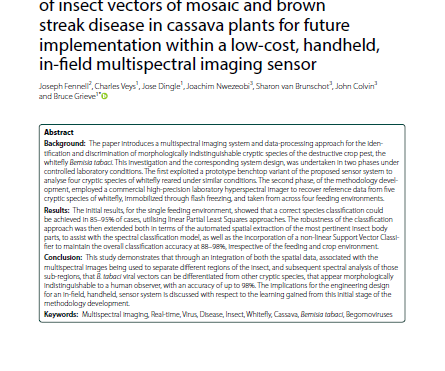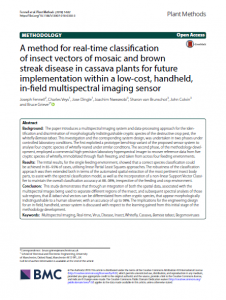The paper introduces a multispectral imaging system and data-processing approach for the identification and discrimination of morphologically indistinguishable cryptic species of the destructive crop pest, the whitefly Bemisia tabaci. This study demonstrates that through an integration of both the spatial data, associated with the multispectral images being used to separate different regions of the insect, and subsequent spectral analysis of those sub-regions, that B. tabaci viral vectors can be differentiated from other cryptic species, that appear morphologically indistinguishable to a human observer, with an accuracy of up to 98%. The implications for the engineering design for an in-field, handheld, sensor system is discussed with respect to the learning gained from this initial stage of the methodology development.
Region: Africa, Asia, South America
Date published:
2018
Published by:
Plant Methods
Type of resource:
Journal article
Resource topic:
Cassava
Project/Programme: Not specific
Pest/Disease: Cassava brown streak virus, Cassava mosaic virus
Pages:
12
File type:
External link (3,810 KB)




